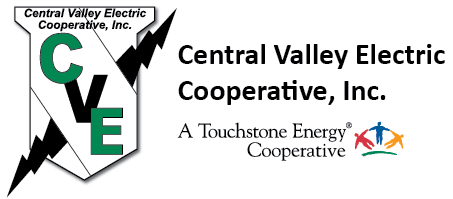Capital Credits
When's the last time you received a check from your utility provider?
It Pays to Be a Member
As a member of Central Valley Electric Cooperative, you are also an owner. When you make a payment to CVE, a portion of that payment goes directly toward your investment in our electrical system. Unlike investor-owned utilities that generate profits on behalf of shareholders, not-for-profit electric cooperatives return any profits, or margins, to their members in the form of capital credits.
Capital Credits FAQ
Because CVE is a cooperative, owned by its members, it does not technically earn profits. Instead, any revenues over and above the cost of doing business are considered "margins." These margins represent an interest-free loan of operating capital by the membership to the cooperative. This capital allows CVE to finance operations and - to a certain extent - construction, with the intent that this capital will be repaid to you in later years.
Allocated capital credits appear as an entry on the permanent financial records of the co-op and reflect your equity or ownership in CVE. When capital credits are retired, a check and/or bill credit is issued to you and your equity in the co-op is reduced.
You should receive an allocation notice every year after the finances for the previous year has been audited.
Capital credits are calculated by CVE for everyone who purchased electricity during a year in which the co-op earned margins. No special action is required to start a capital credit account. Your membership with CVE activates your capital credits account.
The amount of capital credits you earn in a given year is based on the amount of capital you contributed to the co-op through payment of your monthly bills. The more electric service you buy, the greater your capital credits earned. The sum of your monthly bills for a year is multiplied by a percentage to determine your capital credits.
The percentage of our total payment that is allocated as capital credits varies from year to year, depending on the success of the cooperative. Capital credits are only allocated for a year in which CVE earns margins. Since capital credits are a member's share of the margins, no credits are allocated for year with no margins.
No. Capital credits are calculated based on a member's monthly bills. If you are billed for service for even one month, you will accumulate capital credits, if CVE earned margins in that year.
No, allocated capital credits may not be used to pay current bills. Your electric bill is due now, whereas, allocated capital credits may not be retired and returned to you for 18-20 years.
Not necessarily. The Board of Trustees must authorize a retirement before you receive a check. When considering a retirement, the board analyzes the financial health of the co-op and will not authorize a retirement if CVE cannot afford it. Capital credits are retired on a first-in first-out basis.
Your capital credits remain on the books in your name and member number until they are retired. Because capital credits are retired and paid back 18-20 years after the capital credits are earned, you should always make sure CVE has your current mailing address.


